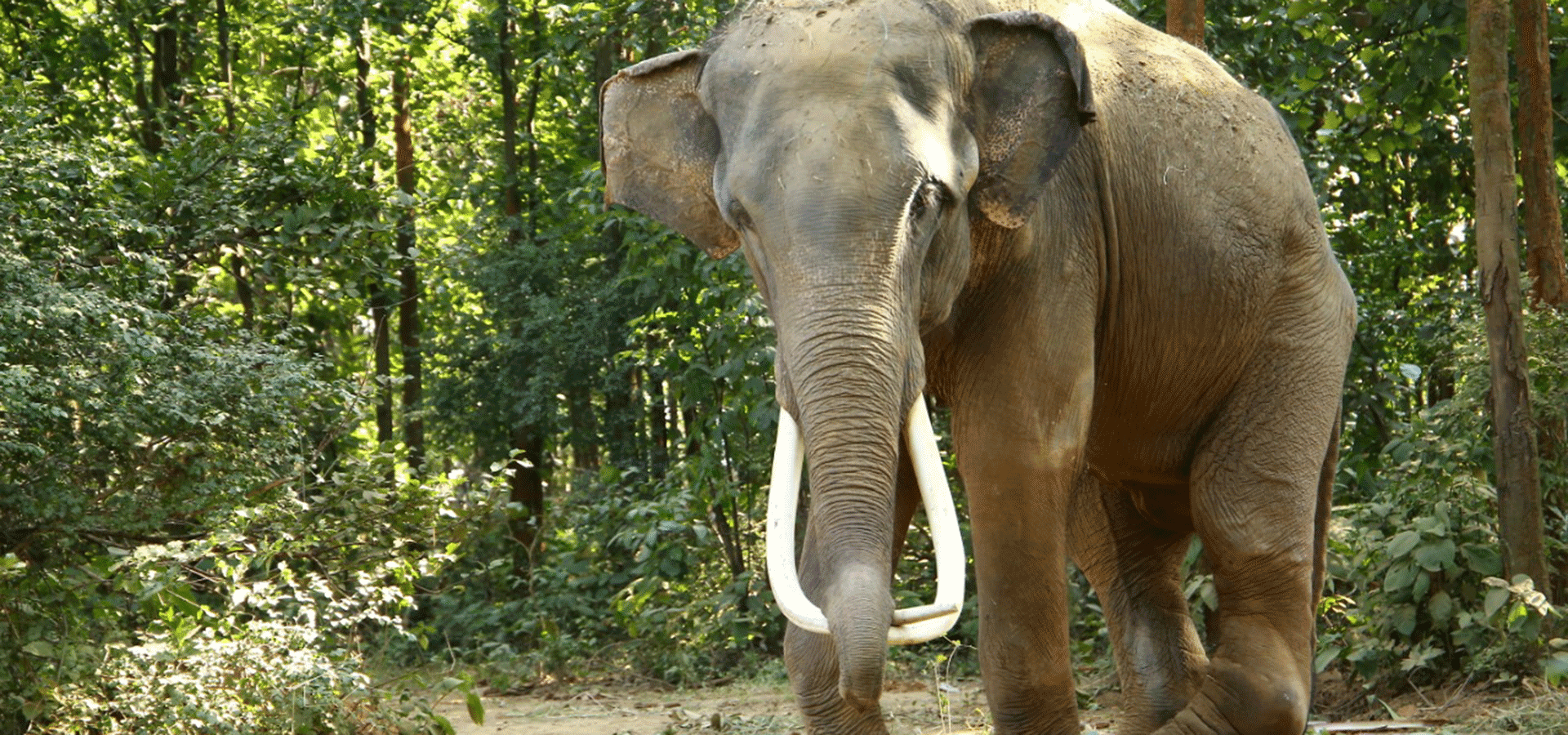Musth (pronounced “must”) is an annual hormonal cycle that naturally occurs in adult male bull elephants. The condition can last anywhere from a few days, to as long as several months. Physical and behavioral changes are characterised by as much as a 100x increase in testosterone levels, highly aggressive behaviour, secretion of a hormone-rich substance called temporin from glands on either side of the elephant’s head, and a steady trickle of urine down the back legs of the elephant.
A bull Asian elephant can weigh up to 15,000 pounds (6,810 kg), so their behavioural changes during musth can be extremely dangerous to themselves, other bulls, and even female elephants. Extreme care must be taken around bull elephants in musth, and interaction should be avoided unless necessary.
For bull elephants in captivity, musth can be particularly challenging for both elephant and caretaker. Normally docile elephants have been known to become uncontrollably enraged, harming caretakers, facilities, and even other elephants, so safe management practices are critical.
Sadly, this completely natural behaviour in male elephants makes them an added target of abuse, neglect and mistreatment in captivity. It is not uncommon for a bull elephant in musth to kill a mahout, destroy property, or even harm themselves or other elephants. Because of this, these bulls are often starved, tightly bound in chains until they’re unable to move, and severely beaten. This mistreatment can last for months, and begin again the following year, causing lasting psychological harm. Many of the rescued bull elephants at Wildlife SOS, like Ramu, show signs of significant past injuries. Ramu’s misshapen back leg was likely broken when he was bound while in musth, then left to heal on its own.

How is the living space for male bull elephants different from that of female elephants?
Female elephants generally form tight bonds and herds, and are led by a matriarch. For captive elephants that can’t be released back into the wild, this allows them to share facilities, living spaces and food in harmony. It’s a regular sight to see Holly, Kalpana, Karma and Zara in and around their swimming pool together! Once established, these strong bonds make planning for living spaces and facilities much more flexible.
Bulls on the other hand rarely form herds and live a fairly solitary life. In the wild, at about 13-15 years of age bulls will leave the herd and live on their own. If wild bulls meet they can have mock battles to establish dominance, but once they’re in musth these battles get more serious and can even result in death. For this reason, bull elephants in captivity are generally kept in solitary living spaces requiring individual pools, fencing, shelters, treatment areas, fresh water access and exercise enrichments.
Some cruel owners starve their bull elephants in musth to reduce their aggression. How does Wildlife SOS change these elephant’s diets?
Yes, many elephant owners will starve their elephants to prevent them from going into musth or reduce the natural behaviours. Bulls at Wildlife SOS continue on their regular diet when they are in musth. They are given nutritious green fodder and vegetables everyday along with vitamin and mineral supplements in a concentrate bolus of horse gram porridge and jaggery. High-energy, sugar-rich foods like sweet fruits are avoided while a bull is in musth.
When a bull elephant is in musth, does the interaction with care staff change? Is the elephant safe to be around?
It is generally not advisable to work with a bull elephant in free contact (i.e. with direct access to the elephant) if the bull is in musth because he is prone to aggression and can be easily irritated. Interactions can be extremely dangerous for both the elephant and caretaker, so extreme care must be taken. The bull’s walks are limited but he continues to undergo target training and positive reinforcement training in his enclosure. Free access to water is extremely important, to allow the bull to cool down, stay hydrated and expend extra energy. The bulls are carefully monitored by the vets and keepers to check for any changes in behaviour that could indicate mental health or physical problems.
How are medical treatments performed on bull elephants in musth?
Since many of our bull elephants are rescued from terrible conditions, they require constant medical attention and are undergoing regular treatment for which the mahouts and vets need access to them even when they are in musth. In order to do this, our vets work with the bulls in what is known as “protected contact,” where a specially designed barrier separates the vet and the elephant. The protected contact wall combined with target training helps our vets work with the elephants even when they are in musth, in a manner that is safe for both the vets and the elephant.
On rare occasions when a bull elephant is particularly aggressive and combative but still requires medical treatment, a stainless steel medical restraint can temporarily be attached to the elephant’s ankle to limit movement. This is done to protect both the elephant and medical staff during these challenging but necessary interactions.
Sometimes a light jute “drag rope” can be tied to the leg of a very aggressive bull elephant in musth to create a psychological effect of being controlled without actually being restrained. This puts the elephant under the impression that they are tied while allowing them access to wander freely in their living space, and gives caretakers the ability to control a possible dangerous situation involving unpredictable behaviour.
Caring for bull elephants is extremely difficult and costly, and our staff must exercise extreme caution for the safety of all involved. The challenges of this compassionate care are increased due to long-term physical and psychological abuse these bulls suffered before their rescue and journey to Wildlife SOS. Our handling of bulls in musth is done with care, the latest research, medical techniques and teamwork to ensure the safety of the elephant and our staff.





